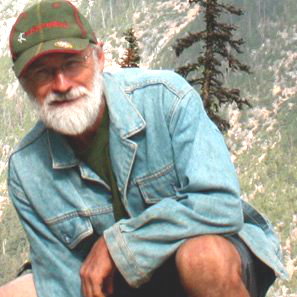
20 years ago, they hadn’t even come up with the idea of American Tree Cities. Now, the US has more tree cities then you can shake a stick at. Spokane is one of them. I predict that one of the next things coming is the American Edible City. You have to meet certain criteria to get your city declared one. They will include things like food forests on public land, useful street tree programs, community gardens, yard farms, and city rules/regulations that promote edible plantings & urban food production rather than discourage them.
I have long thought that most of Spokane’s food needs could be met within the footprint of Spokane County. Spokane is blessed with a soil base that most places in the world would be envious of. Depending on exposure and topography, Spokane is reliably a zone 5 growing season with some bits that are zone 4 and some bits that are zone 6, particularly in the urban heat island. So the range of useful plants that could be grown in Spokane is easily over 3,000 species. As of February 16 there were over 1800 crops in the crops list I am currently compiling for the Inland Northwest.
The world has a very large urban farming movement going on, though the US is generally lagging behind on this. Spokane is a busy place with several urban and peri-urban farming projects going like Project Hope's Riverfront Farm, the Spokane Edible Tree Project, the Local Inland Northwest Cooperative (LINC Foods), several projects in the Vinegar Flats agricultural zone within city limits and neighborhood farmers' markets along with new ordinances easing restrictions on growing and selling food, and livestock, in the city. The urban farming movement is largest in Africa and Asia. Here in North America, Vancouver BC is one of the leaders. There are many websites and networks devoted to this already which one can readily find with google searches. A related initiative is the city food security councils which have sprung up in North America over the last 10 years. Spokane's recently-formed Food Policy Council is a good example of this trend. Toronto, Ontario had one of the earliest models. A search of the websites of the existing food security councils or food policy councils would reveal a lot of ideas to build on.
What percentage of Spokane had farmable soil when the pioneers first showed up?
What roles did the Spokane tribe play in creating and maintaining the ecosystems the settlers observed when they first showed up? In a way we could ask, what % of the land were the Indians farming. All of their root digging areas were managed farmland with perennial root crops. Many berry patches were also maintained.
Indigenous land management was quickly overshadowed by the conversion of a lot of Spokane county to farmland. What % of the cities and counties land mass has been under cultivation at one time? What % is today? What has been lost of that food production land base? A lot of it is now in housing. The real estate occupied by yards in Spokane county is a huge area. The % of yard space in food gardens, fruit trees and other productive crops is low. The % in lawn is large. The % in ornamental plantings is large.
If 50% of the Spokane county’s yard land base was in food and useful plant production that would be a huge production and might actually produce more food than Spokane county can use. There is a potential here for export income as well. We are talking here about a wide range of crops, not just food crops. Local production of a wide range of needs, i.e. import substitution.
What are some feasible goals to set in terms of turning Spokane into the Edible City?
* Get a better handle on the current situation.
* Double the current food gardening area for a start, then double that.
* Increase funding for public food forests.
* Study Seattle’s laws on gardening in parking strips (the area between curb and sidewalk) and Seattle’s parking strip garden contest.
* Test parking strips and yards in high traffic areas to determine what areas have too high a level of contaminants to safely food garden. A Seattle study was done to determine the situation in Seattle. One staff person did most of the work. Use this study to help design one for Spokane.
* Set up a re-coding task force to make policy and code change recommendations to city government. Portland, Oregon is a prime example for this.
* Assist the development of seed swaps and seed libraries.
* Encourage plant breeding to produce varieties especially adapted to Spokane conditions.
* Encourage the development of plant nurseries, seed businesses, garden installation firms, yard farming cooperatives, and so forth.
* Encourage the development of native plant nurseries, volunteer earth repair initiatives and ecological restoration companies and cooperatives. Encourage native plantings in yards and public areas. Work with the Washington Native Plant Society and local environmental groups.
* Determine the status of polluted land in the county and what can be done to regenerate/remediate those sites? How can they be brought back into production? What non-ingestible crops can be grown on land while the contaminants are at too high a level for edible crops?
* Assist the development of municipal and neighborhood composting facilities and local composting businesses, coupled with worm farms. Research, trial and develop compost biomass energy facilities as invented by Jean Pain in France.
* Research and do education on how such a program would improve pollinator habitat, bird habitat, and local biodiversity in general.
* Develop printed material and websites which carry information on useful plants, fragrant plants, colorful plants, edible ornamentals (called edimentals), fruits, berries, fiber crops, etc etc. What is currently available from County Extension, etc and what holes need to be filled? Fund Mike Hagar’s plant data base project.
* Inventory city, county, state and federal land in Spokane county and assess which plots are feasible to rent out for small-scale farming. ¼ acre to 2-acre range. Set up programs.
* Set up a study group to assess how much of Spokane’s fertilizer needs could be met with in-county resources? This includes the residential kitchen compost stream, the yard waste stream, city parks organic stream, agriculture crop wastes, ramial chipped wood, Jean Pain compost systems, plain cardboard, and farm crops grown as mulch/fertilizer to be sold to meet local urban demand.
* Research the current laws on chickens and domestic livestock in the city and county. What can be done to encourage more chickens, and livestock? How can feed needs be met with local agriculture?
* Set up commercial kitchens, freezer-lockers and root cellar lockers to assist citizens to put food up for the winter. Research the custom canneries which were so prevalent in Washington state in the mid-1900s. I worked at one of the last remaining custom canneries in the state in 1972-1974, the Toppenish Custom Cannery. A recent outstanding model is the Tacoma Food Banks custom cannery. * Encourage businesses that retrofit pantries and root cellars into existing residences.
* Set up a program to encourage and fund greenhouses, solar add-ons, and all sizes of hoop houses. The NRCS high tunnel funding program is a current example.
* Research and promulgate low-water use irrigation, rain fed gardening, roof-top water collection, capturing parking lot and street runoff. In other words how to we avoid over-taxing the city water system. How to best to use the water supply that falls on Spokane as rain, snow, hoarfrost and dew.
* Research and implement curb cutting to capture street runoff in swales and gardens. Seattle and Tucson have programs.
* Sponsor lots of workshops on wild edibles and medicinals and the uses of weeds.
* Have weed control efforts be linked up with uses for the weeds removed.
If all these ideas listed here (and more like them) were pursued vigorously a lot could be accomplished in the first five years, 2015-2020. This would lay the groundwork for even greater expansion in the following five years. 2021-2025.
The end result would be a largely, food self-reliant county and a healthier food supply. A huge number of new jobs and economic enterprises, higher employment (at meaningful work), a robust cycling of these dollars in the local economy, less crime and violence, healthier people, reduced health-care costs and suffering, a more stable economy, a more beautiful and interesting landscape, and an all-around, higher quality of life.
We will have a sign-up list for an Edible Spokane study group at the February 20 workshop 1000 Crops for Northwest Growers in Spokane.
The urban farming guys have some good videos. https://theurbanfarmingguys.com/
Farmin’ in the Hood 2.







 MICHAEL “SKEETER” PILARSKI is a life-long student of plants and earth repair. His farming career started in 2nd grade and his organic farming career began in 1972 at age 25. Michael founded Friends of the Trees Society in 1978 and took his first permaculture design course in 1982. Since 1988 he has taught 36 permaculture design courses in the US and abroad. His specialties include earth repair, agriculture, seed collecting, nursery sales, tree planting, fruit picking, permaculture, agroforestry, forestry, ethnobotany, medicinal herb growing, hoeing and wildcrafting. He has hands-on experience with over 1000 species of plants. He is a prolific gathering organizer and likes group singing.
MICHAEL “SKEETER” PILARSKI is a life-long student of plants and earth repair. His farming career started in 2nd grade and his organic farming career began in 1972 at age 25. Michael founded Friends of the Trees Society in 1978 and took his first permaculture design course in 1982. Since 1988 he has taught 36 permaculture design courses in the US and abroad. His specialties include earth repair, agriculture, seed collecting, nursery sales, tree planting, fruit picking, permaculture, agroforestry, forestry, ethnobotany, medicinal herb growing, hoeing and wildcrafting. He has hands-on experience with over 1000 species of plants. He is a prolific gathering organizer and likes group singing.